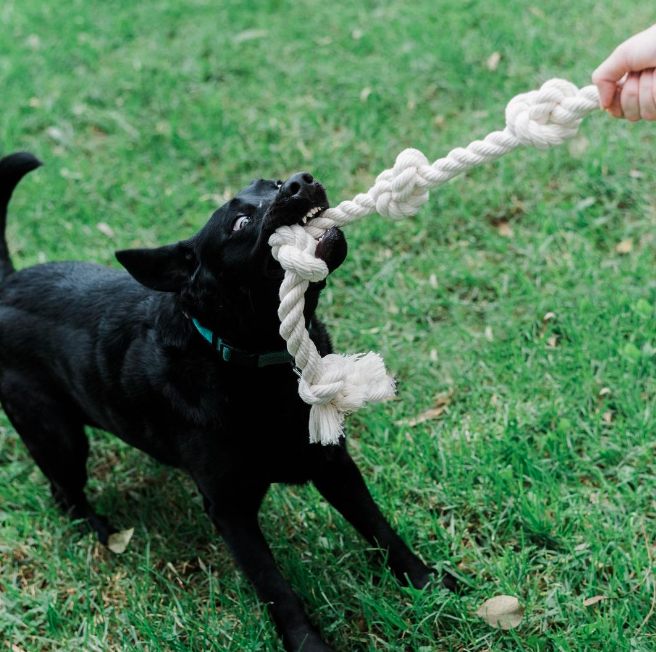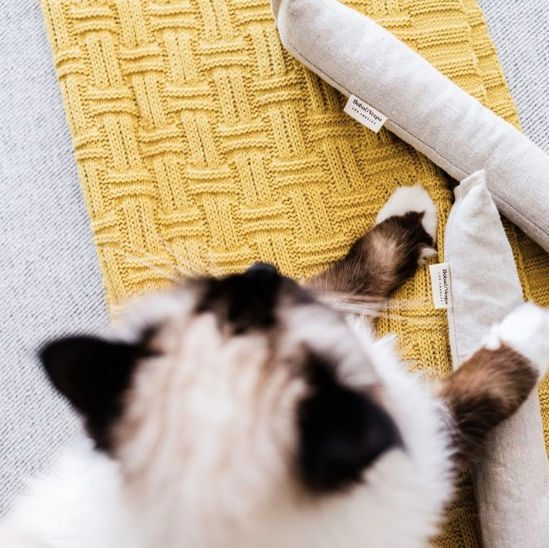UPDATED September 15, 2025
Warning, this article may be a tough read for cat owners who fiercely believe in their cat's right to roam outdoors. We know cat's enjoy their freedom as much as anyone, but it does come at a higher environmental cost than keeping a cat indoors. This article was written to simply share more about that impact.
We love our feline friends as much as anyone. These beautiful creatures have a streak of independence and no shortage of attitude. But for conscientious cat-owners who care about pet sustainability, we must ask the question: are outdoor cats bad for the environment?
Read on to learn more about the environmental impact of outdoor cats and how you can enjoy the company of your pet with less impact on our planet.
Are Cats Good for the Environment?
Cats are generally classified as indoor or outdoor cats. An indoor cat is a cat who prefers the comfort of the house and who is fed daily by their human. On the other hand, outdoor domestic cats (we are referring to pet cats not a feral cat or stray cat) is allowed to roam freely outdoors and thus could be very in touch with their hunting instincts. They may be fed by their humans and they may also hunt for their food and usually will grab an outdoor snack here and there. Some may hunt for fun alone. You may be wondering, what’s wrong with that? It’s natural and it’s not that big of a problem. Unfortunately there are billions of mice and birds killed by cats each year whose deaths could have been avoided.
The issue is that cats often live with their humans in highly populated areas which means native wildlife is far more vulnerable with many more predators than they normally would be. It’s estimated that Americans own about 86 million cats which means approximately one cat for every 3 households.
In addition, cats are carnivores which means they eat meat. But because we feed them already, they often end up killing wildlife without even eating it. Think about it…has your cat ever approached you with an "offering?" Sadly, the unnecessary killing of local wildlife is a common occurrence.
Then there is the issue of waste. Cat waste can runoff into local waterways and introduce harmful bacteria and parasites and lead to algae blooms and other issues. With just one cat it's likely not an issue, but when there is a city full of cats, this can lead to an abundance of waste and a host of water issues.
Environmental Impact of Outdoor Cats
As cat owners, we can love our pets while also thinking about an outdoor cat’s environmental impact. In fact, as pet owners in general, we all have a responsibility to our planet to limit our pet’s carbon and eco footprint as much as possible. The reality is that outdoor cats are bad for local wildlife. By letting your cat run wild, you help contribute to harming local environments and destroying native wildlife. While cats do not know any better, we do.
That said, we understand that as cat-lovers, it can be difficult to come to terms with the fact that our beloved cats are contributing to environmental problems. But being a sustainable pet owner means accepting responsibility instead of turning a blind eye to the environmental impact our pet’s have.
While you may not be ready to keep your outdoor cat inside 100% of the time from now on, consider skipping days outside to start. Get some great cat enrichment toys to keep your cat entertained and not thinking about about what's beyond that big front door.
What about Indoor Cats?
While indoor cats have the same lethal instinct as outdoor cats, the indoor nature of these cats means that they likely won’t harm any local wildlife. Waste is less of an issue as you can clean it up yourself and it's not left out for nature to deal with. Plus, indoor cats can be much healthier. Not only are they less likely to be eaten by predators themselves, they are also less likely to get hit by a car or be exposed to parasites. For these reasons, indoor cats tend to live longer which means you can enjoy more precious time with your pet. By choosing to keep your furry feline inside, you can give them and the wildlife outside your door a better life.
Reducing your Cat’s Carbon Pawprint
Use a Leash: Rather than let your cat roam freely, take your cat on supervised outings to enjoy the great outdoors.
Spray or Neuter: This helps reduce the population of free-roaming and unwanted cats.
Be mindful of cat litter: Clay cat litter is bad for the environment. Look at these better litter alternatives. Consider compostable cat litter bags as well.
Feed them Homecooked Meals: The environmental impact of pet food is huge! Buy local and feed your cat homemade meals instead. This homemade cat food supplement, made by a holistic veterinarian, provides your cat a nutrient sound diet when combined with fresh cooked meals.
Sustainable Toys for your Cat
Since cats love cat nip and swatting they will adore these Stingray Cat Toys in cotton and absolutely zero plastic. The little tail will drive cats bonkers as they bat around this sustainable toy made with natural materials.
Try making Homemade Cat Treats to help reduce your kitty's carbon pawprint.
What sustainable steps are you making as a responsible pet owner?









